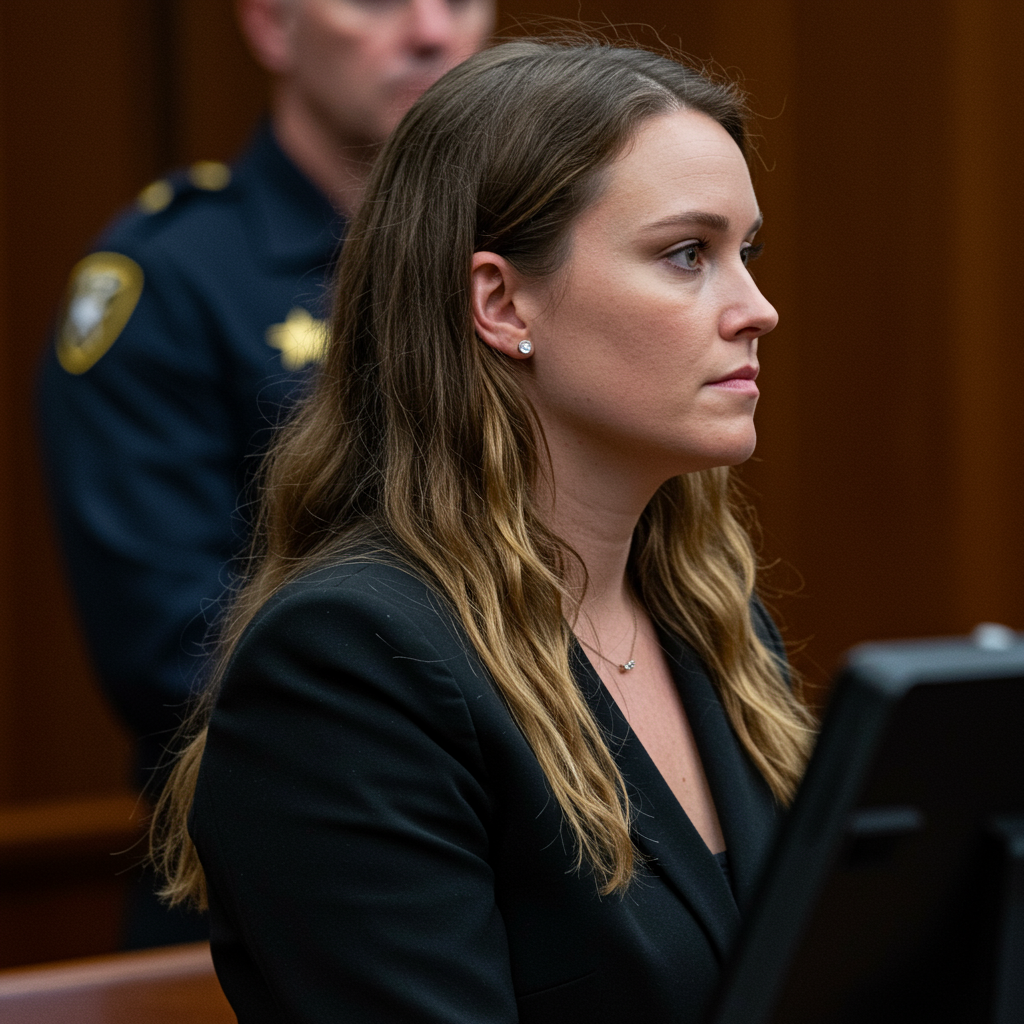The world watched as the verdict arrived. Australian woman Erin patterson has been found guilty of murder. The case, centered around a fatal lunch involving poisonous mushrooms, captured global attention. A jury in Victoria delivered the decision after weeks of evidence and deliberation.
Patterson, aged 50, faced serious charges. She was accused of killing three people and attempting to kill a fourth. All were relatives of her estranged husband. The deaths resulted from a meal served at her home in July 2023.
The Tragic Lunch That Ended Lives
The incident took place in Leongatha, a town in rural Victoria. Erin Patterson hosted four guests for lunch. They included her former parents-in-law, Gail and Donald Patterson. Gail’s sister, Heather Wilkinson, and Heather’s husband, Ian Wilkinson, were also present. Erin’s estranged husband, Simon Patterson, was invited but did not attend. The main dish was homemade beef Wellington. This classic pastry dish typically includes mushrooms.
Tragedy struck swiftly. All four guests became severely ill within hours of eating the meal. They suffered debilitating gastrointestinal symptoms. Despite immediate hospitalization and intensive care, three guests died within a week. Gail Patterson (70), Donald Patterson (70), and Heather Wilkinson (66) succumbed to organ failure. This was caused by poisoning from death cap mushrooms (Amanita phalloides).
Ian Wilkinson (68) was the sole survivor. He endured weeks of critical condition and extensive treatment. He eventually recovered. His testimony became a key part of the trial proceedings. The poisonous fungi were undeniably present in the meal served that day.
A High-Stakes Trial Unfolds
The trial spanned nine weeks in the Supreme Court of Victoria. The central question for the jury was critical. Did Erin Patterson knowingly include the deadly mushrooms? Did she intend to cause harm or death to her guests? Patterson pleaded not guilty. She maintained that the inclusion was a tragic accident. She claimed she mistakenly used foraged wild mushrooms alongside store-bought ones.
Prosecutors, led by Nanette Rogers, painted a different picture. They argued Patterson deliberately poisoned her guests. They detailed what they called “calculated deceptions.” These included using a fabricated cancer diagnosis as a false reason for the invitation. They alleged she intentionally placed lethal death cap mushrooms in the beef Wellingtons. The prosecution also contended she feigned illness herself. This was supposedly done to appear innocent. They argued she engaged in a sustained cover-up after the deaths.
Key Evidence Presented by the Prosecution
The prosecution introduced several pieces of crucial evidence. These aimed to demonstrate Patterson’s intent and attempts to conceal her actions.
Digital Footprints and Foraging Claims
Evidence from Patterson’s electronic devices was significant. It showed internet searches for death cap mushroom sightings. These searches reportedly occurred on a naturalist website before the lunch. Mobile location data suggested she traveled to areas known for these mushrooms. She allegedly purchased a food dehydrator on one such trip. Detectives found photos on her devices. These appeared to show death cap mushrooms being weighed. Patterson gave inconsistent accounts of sourcing dried mushrooms. She initially claimed a cash purchase from an unknown Asian grocery store. She also initially denied owning a dehydrator to police. Later, she admitted to lying about the dehydrator and foraging. She claimed it was due to panic.
The Dehydrator and Disposal
A key piece of evidence was a food dehydrator. Police found it contained traces of poisonous mushrooms. Surveillance footage showed Patterson disposing of this dehydrator. She did this at a local dump the day after being discharged from the hospital. The prosecution argued this was a clear attempt to hide evidence. Patterson’s defense claimed she lied about it out of fear. She was scared of being blamed for the tragedy.
Plating and Symptoms
Survivor Ian Wilkinson testified about the meal plating. He noted Patterson served her plate separately. Hers was on a different coloured plate (orange). The guests used larger, grey plates. One victim reportedly questioned this difference before her death. The prosecution highlighted Patterson’s lack of severe illness. Unlike her guests, she was not critically ill. She attributed this to bulimia. She claimed she vomited after the meal. The prosecution suggested she simply avoided consuming the poisoned portion. Tests on her and her children showed no traces of death cap poisoning.
False Cancer Claim and Relationships
Before the guests fell ill, Patterson told them she had cancer. This claim was untrue. The defence conceded this lie. The guests offered advice on telling her children. The prosecution implied this lie served as a pretext for the fatal invitation. While no specific motive was required, the prosecution presented evidence of strained relations. This included expletive-laden messages about her estranged husband and his parents. This contradicted her claims of loving her in-laws.
The Defence’s Case: Accident, Not Intent
Patterson’s defence team, led by Colin Mandy, presented a different narrative. They argued the deaths were a terrible foraging accident. They contended Patterson had no motive to harm her in-laws. She reportedly had a good relationship with them. This was presented as an “anti-motive.”
The defence argued Patterson’s actions after the lunch were driven by panic. They were not proof of intent. Buying the dehydrator under her own name seemed inconsistent with planning a murder. Photos showed panic, they argued. The cancer lie was told after the meal, not as a pretext for the invitation. They acknowledged Patterson lied to authorities. However, they argued she was not on trial for lying. Her lies stemmed from fear of the situation. They were not guilt for murder.
They suggested her bulimia explained her lack of severe symptoms. Cell phone data was not precise enough, they claimed. It did not definitively prove she visited death cap locations. The defence maintained the prosecution was forcing evidence to fit a pre-determined narrative.
Legal Principles in Focus
The trial highlighted several important legal principles. Legal experts noted a key point: a specific motive is not legally required for a murder conviction. The crucial element is proving a “culpable state of mind.” This means demonstrating an intention to kill or cause serious bodily harm. The jury needed to be convinced beyond reasonable doubt of Patterson’s intent. For the survivor, they needed proof of an intention to kill.
The case heavily relied on circumstantial evidence. Experts explained that circumstantial evidence, while indirect, can be powerful. It can be sufficient for a guilty verdict. The combined strength of evidence – like the disposing of the tainted dehydrator, doubts about her mushroom source story, and the differing meal servings – was compelling for the jury.
The length of the trial and jury deliberation (seven days) reflected the complexity and seriousness. Legal summing-up phases by counsel and judge were also lengthy. This is a trend influenced by past appeal court judgments. These require exhaustive coverage of both prosecution and defence cases to ensure a fair trial.
What the Guilty Verdict Means
The jury’s unanimous guilty verdicts for three counts of murder and one count of attempted murder were definitive. They rejected the defence’s claim of accidental inclusion. The jury concluded that Erin Patterson knew the mushrooms were poisonous. They found she intended to cause death or serious harm.
The case has attracted significant global media attention. Its dramatic elements have even inspired a planned Australian TV series titled “Toxic.” This highlights the public fascination with the tragic and perplexing events.
What Happens Next?
Erin Patterson will return to court for sentencing at a later date. The maximum sentence for murder in Victoria is life imprisonment. Sentencing involves setting a head sentence and a non-parole period. The number of victims typically influences the non-parole period. Legal experts suggest she is likely to receive a life sentence. The exact term will be determined by Justice Christopher Beale. The process will include further sentencing submissions from both sides. The verdict brings a legal conclusion to a case that shocked Australia and the world.
Frequently Asked Questions
What was the Erin Patterson mushroom murder case about?
The case involved Australian woman Erin Patterson being found guilty of murdering three people and attempting to murder a fourth. The victims were relatives of her estranged husband. They died after eating a lunch she hosted in July 2023. The meal contained death cap mushrooms, a highly poisonous fungus, resulting in organ failure. Patterson maintained the deaths were an accident, while the prosecution argued she deliberately poisoned them.
What key evidence led to Erin Patterson’s guilty verdict?
Crucial evidence included Erin Patterson disposing of a food dehydrator containing traces of poisonous mushrooms after the deaths. Digital evidence showed she searched for death cap sightings online and visited relevant locations. Prosecutors highlighted her serving herself on a different plate than her guests and her inconsistent accounts of sourcing the mushrooms. They also pointed to her false cancer claim and admitted lies to police as evidence of deception and cover-up.
What sentence could Erin Patterson receive after being found guilty?
Erin Patterson has been found guilty of three counts of murder and one count of attempted murder. In Victoria, Australia, the maximum sentence for murder is life imprisonment. While the final sentence and the minimum non-parole period will be determined by the judge at a later sentencing hearing, legal experts suggest she is likely facing a life sentence given the severity of the crimes and the number of victims.



